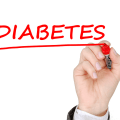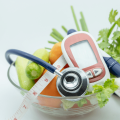Table of Contents
Are there stages of type two diabetes? You now know that there are two major types of diabetes – type 1 and type II, as a matter of fact, there are three, but the third one is only exclusive for pregnant women, it’s called gestational diabetes. Not a lot of patients know there are stages of type two diabetes. The classifications in this article are not official but some physicians and researchers agreed that it is under the stages of type two diabetes. This might broaden your knowledge further and could also help you in possibly identifying which category you fall into so you can act accordingly.
Different Stages of Type Two Diabetes
According to some researchers, stages of type two diabetes can be classified into four; these are type O, type I, subtype H, and subtype S. In this section; we’ll briefly discuss these subtypes and also provide some general guideline on what to do or what you should avoid being able to control or at least manage it.
Type O
According to studies, type O is pretty much a classic type II diabetes. Around 50 – 60% of patients are overweight and is highly insulin resistant. Most patients have off – the charts insulin levels (which means that the body is uncontrollably producing excess insulin) and usually; it is often too late once the patients found out. The symptoms are very subtle, that’s why if you are overweight; or have a family history of the disease you should test your blood sugar levels every now and then.
Type I
Type I is referred to as the “thin or mild version” of type II diabetes. Patients who were diagnosed with type II diabetes that belongs to the type I category could be underweight and have very low levels of insulin; but they have high levels of glucose in their bloodstream. These patients are often diagnosed specifically with Latent Autoimmune Diabetes of Adults (LADA). Type I patients should only have small frequent feeding so that their low levels of insulin; can handle and control the glucose in the bloodstream. Low – carb foods and a small chunk of protein should be their ideal diet.
Subtype H
H stands for hormonal, patients classified under subtype H often have worn out adrenal glands; and they usually have low thyroid. These patients could be slightly overweight or even have a normal weight but their bodies could get easily inflamed. Patients under subtype H may or may not be insulin resistant as well. If you fall under this particular stage of type two diabetes, you may need carbs (although it may not work for some depending on your current condition and other factors); but since the adrenal glands cannot produce enough carbs; the patient needs to compensate for that lack through incorporating carbohydrate-rich foods in their diet. Some examples are sweet potatoes or beets (best for people who can’t easily sleep).
Subtype S
S stands for stress-induced, your type II diabetes can either be caused by long – term chronic stress; or one big time traumatic stress. Patients under this subcategory have, obviously; high levels of stress hormones or cortisol and adrenaline in their body which then causes an increase in blood sugar levels. If you think you are under this classification; then better eat up some carbs (but not too much though); and also limit caffeine and alcohol or any other similar stimulants. You can also try some supplements but consult your doctor first before taking any.
Stages of Type Two Diabetes: Phases
According to many experts, once a patient is officially diagnosed with stages of type two diabetes; they may actually already have diabetes-related problems long before they know it!
Chances are the buildup of high glucose levels in the bloodstream already caused some damage to your kidneys, heart; and nerves way before noticeable symptoms appear. So if you are “newly” diagnosed, that means you have been “in the club” long before you realize it.
What Happens Next?
So what happens next? After finding out, your pancreas may still not know that there’s a problem because as tests will show; it will still produce normal amounts of insulin in the body in order to keep blood sugar or glucose under control. But over time, the cells will eventually resist the insulin – which means that you’ve now entered level 2; doctors called it “insulin resistance.”
Once your cells can’t longer use the naturally occurring insulin; your pancreas will then be “notified,” and to overcome this resistance, it will begin to produce more insulin than before. At some point; it will not be able to keep up with the body’s high demands; and sugar levels in your bloodstream will continue to increase. This phase is now called pre-diabetes. It’s like you are almost there but not quite!
Pre-diabetes means that your blood sugar is higher than normal; but may not be high enough to be classified stages of type two diabetes. Now, once you’ve reached this stage; there’s still a chance to at least delay it or prevent yourself from actually being diagnosed as diabetic.
Overweight?
According to many physicians, this is the time to really consider losing weight (if you are overweight); or eating balanced diet food and regularly exercising a few minutes each day because it helps lower blood pressure; improves blood fats, and also reduce the risk of heart diseases.
It is in this phase where your pancreas tries to produce insane amounts of insulin rapidly. Think of it as “panic mode.” You can help your pancreas calm down by eating good nutrition; and waking up your immune system through exercise.
If for some reason, you didn’t try your best to prevent from progressing to the diabetic stage or if it’s already too late; your pancreas will be “burnt out,” in producing insulin and it will eventually begin to wear out. Once this happens, your sugar levels will now increase and you will officially be classified as stages of type two diabetes. Welcome to the club!
When you’ve reached this point, that means that your pancreas has already lost 50% of its ability to produce insulin. Aside from a balanced diet and regular exercise, you will then be prescribed with one or two types of medicines.
Most likely, your physician will prescribe one pill to increase the production of insulin; and another pill to decrease the cell’s resistance to insulin. However; since your pancreas will continue to decline in its ability to produce insulin; many patients diagnosed with type II are eventually advised to take insulin.
As blood sugar goes out of control and your disease progresses; you and your doctor needs; to work together especially when it comes to monitoring and keeping a tab on your sugar levels. You will be advised to take in proper nutrition; take appropriate meds and match it all with a physical activity that is suitable for you.
The key to controlling your blood glucose is regular monitoring and of course, following your physician’s advice or suggestion. We hope you learn the different stages of type two diabetes.






 I love to write medical education books. My books are written for everyone in an easy to read and understandable style.
I love to write medical education books. My books are written for everyone in an easy to read and understandable style.